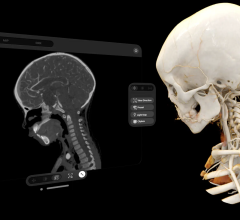In a rare showing of bipartisan support, on April 14, 2015, Congress repealed the sustainable growth rate (SGR) and approved a new framework to allow Medicare to transition from its current fee-for-service payment system to a value-based reimbursement system. The legislation (H.R. 2) eliminates the threat of annual cuts in Medicare payments to providers that were required under the SGR, which was approved more than a decade ago to control skyrocketing Medicare costs.
All medical societies and providers have lobbied for years to repeal the SGR, arguing it reduces Medicare reimbursements below the cost needed to provide services to patients. The legislation headed off a 21 percent cut in the doctors' pay that was set to go into effect in 2015. There was fear that many providers might not provide services to Medicare patients if the cuts went into effect.
The SGR, originally instituted in 2003, has been patched 17 times in the years since then, and a 21 percent rate reduction for all physicians was scheduled to take effect on April 1, 2015, if legislation was not passed. The permanent SGR fix will yield a new Medicare payment system that should stabilize reimbursement with a focus on higher-quality care. H.R. 2 changed the language of the SGR to an end date of 2014. It was originally planned to be in use until 2025. The bill calls for the consolidation of performance programs with a new merit-based incentive payment system.
The new law, the Medicare Access and Children's Health Insurance Program (CHIP) Act, permanently amends title XVIII of the Social Security Act to repeal the flawed SGR formula and reforms the Medicare physician payment system. The House approved the bill March 26, by a vote of 392-37. The Senate gave final approval for the bill April 14 in a 92-8 vote. President Obama is expected to sign the bill into law.
The legislation will increase physician pay by 0.5 percent in the second half of 2015, and then an additional 0.5 percent annually from 2016 through the end of 2019. The 2019 rates would be maintained through 2025 with no additional increases. The bills also include comprehensive structural changes to Medicare’s reimbursement model that would promote physician participation in clinical quality improvement activities and value-based, quality care that would take full effect in 2019. In addition, current Medicare programs that reward use of electronic health records (EHRs), quality reporting, the value-based modifier and meaningful use would be merged by 2019 to encourage participation and reduce the administrative burden. The total package for the SGR fix is estimated to cost more than $200 billion over the next 10 years, of which approximately $70 billion would be offset by additional Medicare policy changes.
Medical Societies Support Repeal
Numerous medical societies released statements in support of the passage of the bill.
“Previous short-term SGR fixes have too often been paid for out of technical component reductions in diagnostic imaging," said Bibb Allen, M.D., FACR, chair of the American College of Radiology (ACR) Board of Chancellors. "It is long past time to put some stability into the physician payment system. However, infinite policy details must be worked out to ensure it is implemented appropriately. The legislation moves us away from fee-for-service to value-based alternative payment models, most not yet designed, but this is the future and the future is now.”
The ACR said the SGR formula has plagued physicians by threatening drastic reimbursement reductions each year since 2001. Congress has responded by consistently applying short term patches to avert the reimbursement reductions, but these have been largely paid for through reductions to other physician services, such as the technical component for diagnostic imaging.
“With its strong passage of H.R. 2, the House has shown it can act in a bipartisan manner to pass legislation that solves a longstanding problem,” said American College of Cardiology (ACC) President Kim Allan Williams Sr., M.D., FACC. "The SGR has created a cycle of short-term fixes causing administrative burdens for practices and uncertainty for clinicians and Medicare patients. After more than a decade, it is time to end this flawed payment formula and focus on providing quality patient care. Today is an exceptional day for Medicare patients and for the medical professionals who care for them, thanks to the long-awaited permanent repeal of the flawed sustainable growth rate formula."
Williams said the Senate has accomplished a major feat by passing legislation that ends a cycle of delays and patches in the law, which has created uncertainty for Medicare patients and clinicians for more than a decade.
“Congress has proven it can take bipartisan, bicameral action to solve seemingly insurmountable problems," Williams said. "We applaud the members in the House and Senate for coming together to implement true Medicare reform while extending funding for the Children’s Health Insurance Program, which offers access to healthcare for many children, including those with complex cardiovascular conditions.”
“Repealing the SGR has been an ASTRO priority for years, and passage of this legislation represents a long-awaited, historic victory for our patients," said Bruce Haffty, M.D., FASTRO, chair of the American Society for Radiation Oncology's (ASTRO) Board of Directors. "Permanently repealing the SGR and replacing it with a stabilized reimbursement plan focused on quality will strengthen Medicare and allow us to enhance cancer care for the more than 1 million patients treated with radiation therapy each year. We commend the strong bipartisan leadership in the House and Senate, and President Obama for this extraordinary achievement that will ensure that patients have access to the care that they need. We are excited to turn the page on the SGR and to work with Congress and the president on additional needed Medicare reforms, including stabilizing specific radiation oncology payments and protecting patients and the integrity of the Medicare program by closing the physician self-referral loophole.
“We are at a turning point for our nation’s healthcare system,” Haffty continued. “Permanently fixing the SGR with the comprehensive plan outlined in this legislation would be significant. A stabilized reimbursement plan would strengthen Medicare and allow us to improve quality faster for our patients.”
Creating a Merit-based Payment System
The law includes several reforms to the Medicare payment system, moving it from a fee-for-service to a fee-for-value model. The legislation directs the secretary of the Department of Health and Human Services (HHS) to establish an eligible professional merit-based incentive payment system (MIPS). This is to include methodology for assessing the total performance of each MIPS eligible professional according to performance standards; provide for a composite performance score for each provider; and use this composite performance score of the MIPS provider for a performance period of a year to determine and apply a MIPS payment adjustment factor.
A “MIPS eligible professional” is defined in the legislation as a physician, physician assistant, nurse practitioner, clinical nurse specialist or a certified registered nurse anesthetist. These professionals will be measured with criteria set in the performance categories of quality, resource use, clinical practice improvement activities and meaningful use of certified EHR technology, in determining the composite performance score used for reimbursement.
Performance Criteria Being Measured
Quality measures will be established and upgraded annually for each specialty based on input from professional societies and organizations involved in each specialty area. These lists of quality measures will be made available no later than Nov. 1 each year and go into effect as of Jan. 1 of the coming year. Any new measures are required to be published in the final list of measures published each year in specialty-appropriate, peer-reviewed journals to explain each measure and the method for developing and selecting the measure, including clinical and other supporting data.
Quality measures as defined and used by qualified clinical data registries will also play a role in determining what measures are considered for each specialty.
When considering resource use, professionals will be evaluated on how efficiently they use resources, such as imaging exams or diagnostic testing. Part of the evaluation will be an account for the cost of drugs prescribed under Medicare Part D.
Clinical practice improvement activities will include several subcategories, including the following: The subcategory of expanded practice access will include same-day appointments for urgent needs and after-hours access to clinician advice. A category for population management will review monitoring of health conditions of individuals to provide timely healthcare interventions, or participation in qualified clinical data registries. The subcategory of care coordination will include timely communication of test results, timely exchange of clinical information to patients and other providers, and use of remote monitoring or telehealth. The subcategory of beneficiary engagement will include the establishment of care plans for individuals with complex care needs, beneficiary self-management assessment and training, and using shared decision-making mechanisms. The subcategory of patient safety and practice assessment will include thorough use of clinical or surgical checklists and practice assessments related to maintaining certification.
Each specialty professional organization will identify ways to improve clinical practice or care delivery activities that are likely to result in improved outcomes.
For meaningful use of EHRs, the legislation emphasizes the application of outcome measures. Global outcome measures and population-based measures might be considered. The HHS is supposed to consider the circumstances of professionals who typically furnish services that do not involve face-to-face interaction with a patient (i.e. radiologists).
Assessing Performance Scores
The legislation calls for the HHS secretary to develop a methodology for a composite assessment of the total performance of each MIPS eligible professional according to the defined performance measures and activities yet to be specified. The composite assessment (using a scoring scale of 0 to 100) will be applied to each professional for a performance period of one year. Any professional who fails to report on an applicable measure or activity that is required to be reported will be treated as achieving the lowest potential score applicable.
Reporting quality measures through the use of EHR technology will automatically qualify the professional as satisfying the clinical quality measures reporting requirement in their annual assessment.
Starting with the second year of MIPS reporting, the evaluation system may take into account the improvement of the professional to enable higher payments.
For the first and second years for which the MIPS applies to payments, the overall assessments will be based on 30 percent for quality, 30 percent for resource use, 25 percent for meaningful EHR use, and 15 percent for clinical practice improvement activities. However, the HHS secretary is given flexibility in the law to weight these performance measures differently for some types of professionals where the application of some standards may not be as important. This can include a weight of zero if a measure does not apply to a specific specialty.
Payments
Each year, the HHS Secretary will specify a MIPS adjustment factor in the payments for each MIPS eligible professional. The legislation defines these as 4 percent in 2019, 5 percent in 2020, 7 percent in 2021, and 9 percent in 2022 and subsequent years. Additional payment factors may be added for outstanding performance.
In the case of items and services furnished by MIPS professionals during a year (beginning in 2019), the amount otherwise paid will be multiplied by one, plus the sum of the MIPS adjustment factor divided by 100. If applicable, the additional MIPS adjustment factor determined for outstanding performance will be divided by 100.
Physician Performance Will be Published
HHS is supposed to make available all professional performance measures for all providers in an easy to understand format on the Physician Compare website of the Centers for Medicare and Medicaid Services (CMS). This will include the composite score for each MIPS eligible professional and their scores in each performance category. HHS will offer professionals the opportunity to review and submit corrections for the information prior to the information being made public.
Beginning July 1, 2018, HHS will enable Web portal access so professionals can view services and items provided to their patients for which payment is made.
Help in Rural or Underserved Areas
HHS will provide quality improvement organizations or regional extension centers to offer guidance and assistance to professionals in practices of 15 or fewer employees. Priority will be given to practices located in rural areas, areas with a shortage of health professionals, medically underserved areas, and practices with low composite scores. To enable this effort, CMS will have $20 million in funding available from 2016 through 2020.
Progress Report to Congress
By Oct. 1, 2021, the Government Accounting Office (GAO) is supposed to submit a report to Congress evaluating the MIPS payment system. This will include recommendations to improve the program.



 May 01, 2024
May 01, 2024 








